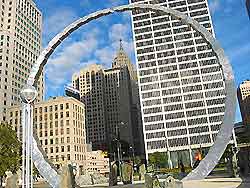Dead Man, some random thoughts
I am finally getting around to posting some thoughts on Dead Man. This semester I am also taking the William Blake course with Dr. Lansverk, and I believe that course alone helps to understand this film a tad more than the average audience member.
I would like to start by saying that the lack of visual colour in the film detracts from the original vision of William Blake. One need only study a few of Blake’s plates, and you can easily see the important role that colour plays in his works. The opening plate of the Book of Thel, for example, has an image of Thel dressed in green. The colour green here represents BVM, and is critical in understanding the story that follows. This is but one, of many examples of this.
As this is a discussion of Jamrosh’s work, let’s focus on that. He’s drawing heavily from Blake’s works, and as such three incredibly obvious Blakean characters appear in the story. William Blake is the obvious first, followed by Thel, and the unnamed Palambron. Palambron appears in the form of the blackened face messenger that talks to Blake before his arrival in Machine. If the reader of Blake turns to America: A Prophecy, you can see where Jamrosch received his visual depiction of this character.
Thel provides the important first glimpse of the link to Blake’s world. To Blake the dichotomy of Innocence/Experience is all important. We see this with Thel. She used to be a whore, and now seems to achieved a new found type of innocence. It is a state that follows experience. To William Blake proper, this term is found in his usage of the term Jersualem.
To explain Blake in terms of the this blog entry is simply not possible. It’s taken me a full semester to get to this level of comprehension. However, turning to just one aspect of Blake, this idea of innocence/experience, we can see the process of initation-seperation-return at work. Jersulam is the return to innocence, with experience being the separation aspect. We know that Thel has returned to this innocence by the white of her roses.
The story of this William Blake follows the same path, as he arrives in Machine innocent, is initiated into experience through violence, and returns to a state of innocence with the blood of the innocent fawn. It is only after the blood of the fawn that he realizes he has written poetry. “I’m William Blake, do you know my poetry?”
Jamrosch gets one more point right in this movie. Blake’s conflict with the clergy. The priest must be evil, and must be eliminated. This is due to the fact that Blake believes that hierarchical external religions are evil because they destroy the inner Poetic Genius of the artist. To Blake, Christ was an artist, the first in the line of the divine poets to follow. Wallace Stevens plays with this same idea in “The Idea of Order at Key West.” Externally ordered universes try to kill the soul of the individual. For more information, please read Northrop Frye’s Fearful Symmetry

